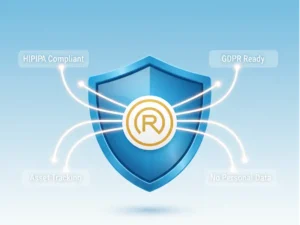
How RFID Tags “Light Up” Industrial Laundry Workflow
Custom Your RFID Cards
You’ve heard the promise of the “smart laundry”: automated sorting, 1-second inventory counts, and zero shipping errors. It’s an impressive and expensive vision built on software, conveyor belts, and RFID gates.
However, automation system is actually blind Every decision, alert, and machine action rely 100% on data from one tiny RFID tag. If that tag fails on its 50th wash cycle, if it can’t be read when wet, or if it’s crushed by a 60-bar press, your entire automation system is useless at that moment.
Let’s walk through the four critical moments in your workflow. We’ll show you how a high-performance RFID tag is the hidden hero that enables every efficiency you’re paying for.
Receiving -Tags as Undeniable Proof
Before: Your team spends 30 minutes manually counting a chaotic pile of soiled linens from a cart, trying to match it to the customer’s (likely inaccurate) delivery note. You almost always lose this argument and the revenue that goes with it.

With RFID: Your system integrator installs an RFID Portal (Tunnel Gate) at the receiving dock.
- How the System Works: Works simply pushes the entire cart through the portal. In one second, the system’s fixed readers identify every single item.
- The Tag’s Critical Moment: This is the tag’s first and most difficult test. It must be read in bulk, while wet, and tightly packed. A weak tag will fail here, leading to inaccurate counts.
- Our Value: Your laundry management software can automatically generate receiving lists and match against customer manifests, but the entire process depends on whether each RFID laundry tag can be read in one go.
Sorting – Tags Enable Automated Decisions
Before: You have multiple, high-cost employees standing at a conveyor belt, manually identifying and sorting items for different customers or wash cycles. It’s your most labor-intensive, error-prone bottleneck.
With RFID: Your integrator installs a Fixed RFID Reader above the conveyor belt.
- How the System Works: As a linen piece passes under the reader, the software identifies it in milliseconds.
- Standard System: The software may trigger a light or sound alert to guide your employee to sort it correctly.
- Advanced System: The software may trigger a robotic arm or a pneumatic blast to physically push the item into the correct bin, enabling a fully automated line.
- The Tag’s Critical Moment: The tag must deliver a single, accurate signal in a fraction of a second, with zero “false reads” of its neighbors.
- Our Value: No matter how advanced your system, robotic arms or pneumatic gates act only on the prompt delivered by the RFID tags. Reliable, high-speed tags ensure sorting automation works as promised, without reverting to manual checks or risking expensive mistakes.
Shipping – Tags as the Last Line of Defense
Before: Your outbound team packs an order for Hotel A. By mistake, 10 pillowcases belonging to Hospital B are mixed in. You ship the order, and hours later you get an angry call from your best customer, forcing you to pay for retrieval, re-delivery, and apologies.
With RFID: Your integrator installs a Shipping Validation Portal at the outbound dock.
- How the System Works: A worker pushes the “Hotel A” cart through the portal for a final check. The system software instantly compares the cart’s contents against the shipping order.
- The Tag’s Critical Moment: This is the last line of defense. Every tag must be read.
- Our Value: When the system’s software detects the 10 tags belonging to “Hospital B,” it immediately triggers a red alert and stops the shipment. The “alert” is the software’s job, but the ability to see the error is enabled entirely by the data from RFID tags.
Tag Technology: Surviving Every Workflow Challenge
The backbone of automation is choosing the right industrial-grade RFID tag. Our tags are engineered with advanced materials and antenna design to withstand:
- Extreme heat: Survive >200°C in ironing and drying
- High pressure: Endure 60 bar during extraction or stacking
- Chemical exposure: Resist repeated cycles of harsh acids and alkalis
- Metal interference: Function reliably even in mixed carts and metallic environments
Recommended Reading: RFID Laundry Tag PPS vs Textile vs Silicone
Customization is available for all shapes, sizes, colors, and print requirements, ensuring seamless integration with your chosen system.
Conclusion
The true cornerstone of RFID automation isn’t software or hardware, it’s the RFID tag. Before implementing any automation solution, consult with RFID tag experts. Don’t let a few cents’ worth of cheap, unreliable tags undermine the investment and promise of your entire system.
Call to Action:
- FAQ: RFID Laundry Tags Common Questions
- Ready to start: Contact us for free samples, customization advice, and technology solutions
Choose the right RFID tags, and you’ll truly illuminate every step of your smart laundry operation.


